Examining the Google Mini
The Mini itself is actually your run-of-the-mill 1U server, with the chassis painted blue.

The front of the machine features both the front mounting hardware as well as an exposed grill for ventilation.

Click to enlarge.
Although it is tough to see from the picture below, behind the grill is a fully functional CD-ROM drive that you can’t (and aren’t meant to) access without taking apart the machine:
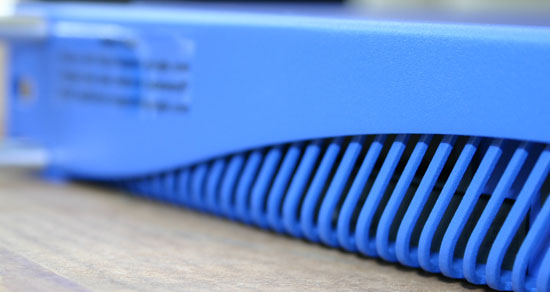
Behind this grill is a slim-line CD-ROM drive, not meant to be used by the user.
Looking at the rear of the machine, you get a better indication of what the Google Mini actually is (hardware-wise):

You see two PS/2 ports (keyboard/mouse), two USB ports, a parallel port, a serial port, VGA output, two Ethernet ports (color-coded to match the cables) and a single slot cover.

The two Ethernet ports are color-coded to match the cables provided with the Google Mini.
Getting Inside the Mini
It’s very clear that Google doesn’t want you playing around with the innards of the Mini as most of the screws have no usable head:

The grey screw above the rightmost Ethernet port features no usable head. Luckily, removing the screw only requires a little patience and some pliers.

The screw is threaded - it just can’t be undone with a regular screwdriver.
The mounting brackets are attached to the Mini using regular screws, so those can be installed/removed without any trouble. Once you get the screws off of the back of the Mini, there’s one last step to getting inside the unit.
The top of the Mini is actually one large piece of plastic with adhesive on its back that not only makes the unit look better, but also acts as another safeguard against curious users gaining access to the internals of the machine. Peeling back the front edge of the top breaks the adhesive and allows us to slide off the front cover.
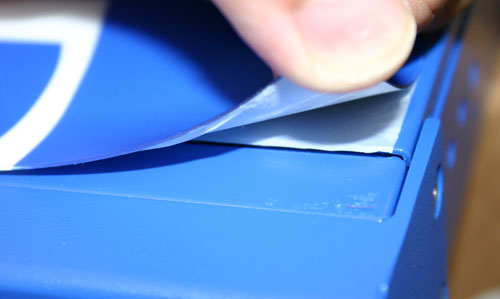
With the cover off, the internals of the Mini are no different than your standard 1U server. There are three drive bays and a large shroud channeling air to the processors underneath.
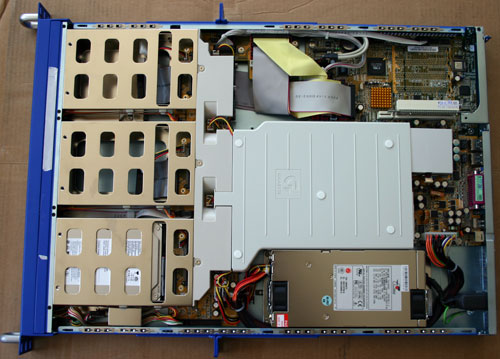
Click to enlarge.
A closer look at the fan shroud tells us the original manufacturer of the server, Gigabyte:
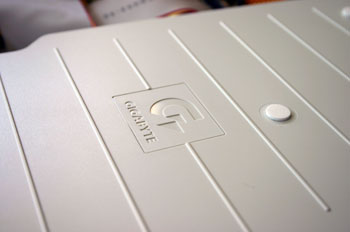
Removing the shroud reveals a pair of processors and the rest of the motherboard. The motherboard, like the server, is manufactured by Gigabyte:

The CPU heatsinks themselves also carry the Gigabyte brand:
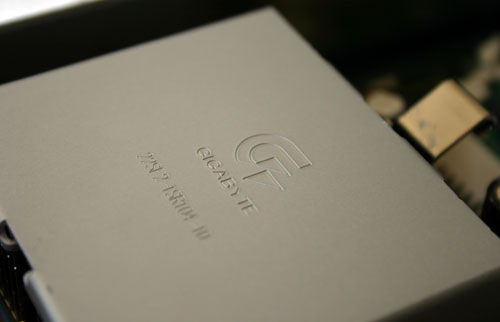
The heatsinks have no fans on them. Instead, they rely on the chassis fans and the fan shroud to remove heat from them.
We were curious to see what was under those heatsinks, so of course, we pulled one off:
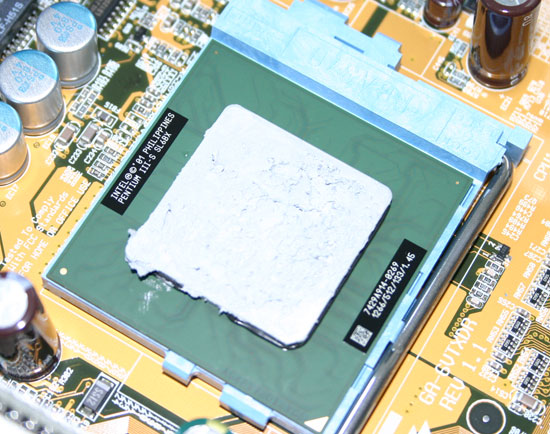
The Google Mini uses a pair of Pentium III-S processors running at 1.26GHz. It’s been a while since we’ve seen these used in a server, but they are most likely more than enough for the job at hand.
The motherboard features a VIA chipset, as is evident by the VIA South Bridge pictured below:
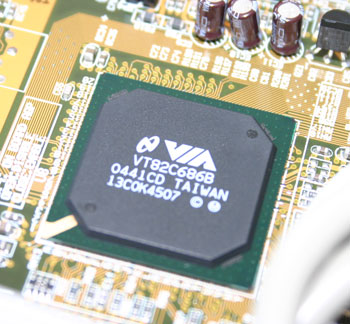
All of the drive bays in the server feature PATA interfaces and are handled directly by a Promise IDE RAID controller:
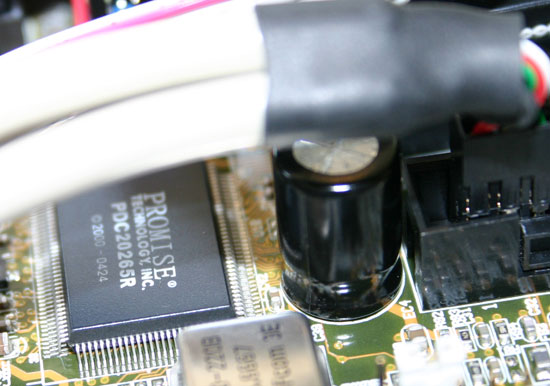
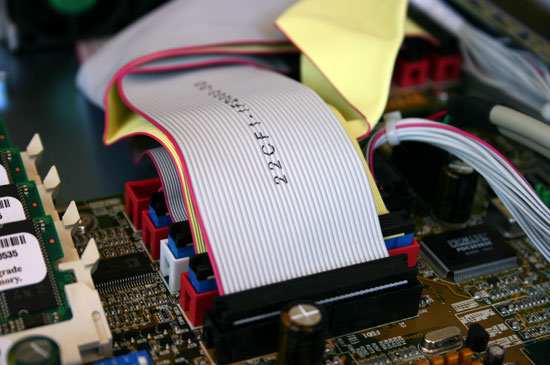
The system shipped with a single hard drive, a 120GB Seagate Barracuda 7200.7.
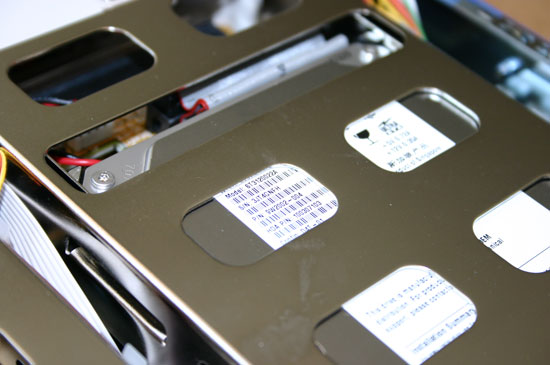
The Google Mini ships with 2GB of PC133 SDRAM (4 x 512MB sticks); interestingly enough, the memory uses Micron chips and is labeled as Dell memory.

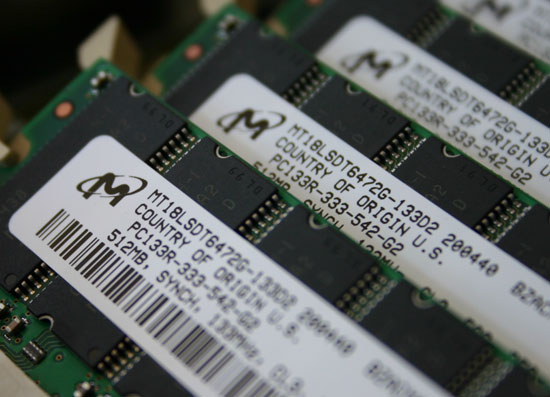
Powering the system up reveals a normal AMI BIOS, but of course, entering the BIOS is password protected - and you’re not given the password.
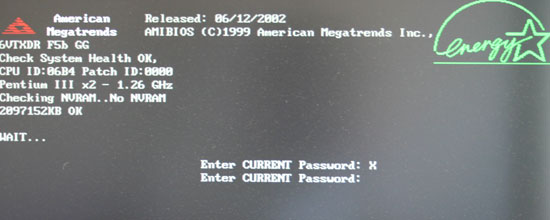






























48 Comments
View All Comments
glennpratt - Tuesday, September 6, 2005 - link
Add quotes when you wan't a common word included, ie:http://search.anandtech.com/search?q=%22i-ram%22&a...">"i-ram"
Jeff7181 - Monday, September 5, 2005 - link
I like the article... but more importantly, AnandTech Search isn't completely useless anymore.Lifted - Monday, September 5, 2005 - link
Hell, he will f---ing kill you!Hi - Monday, September 5, 2005 - link
i guess anand is dead:(
Verdant - Monday, September 5, 2005 - link
at $3,000 it is a pretty good deal, but the 100,000 limitation is, well, a huge limitation, and the $30,000 pricetag on it's big brother is not that competitive with software solutions/crawlers.... especially since IT can only search 500,000 documents.Googer - Tuesday, September 6, 2005 - link
Are you kidding? It's a freaking P3 1.26GHz! I could Do much better for Two grand.rajivdx - Friday, September 9, 2005 - link
Make no mistake about it its bloody fast!! It makes the rest of the Anandtech site look *absolutely* slow by comparision.Verdant - Tuesday, September 6, 2005 - link
you've never looked at the prices of database software licenses, developers or content management packages before, have you?Calin - Tuesday, September 6, 2005 - link
There are two processors in fact - and you could buy something like that (no hardware) for $1,500 easily (maybe not so easily as the 1.26GHz Pentium III could be hard to find, but you could replace them with Athlons or Pentium4s at the same performance for cheaper).JustAnAverageGuy - Tuesday, September 6, 2005 - link
You're mostly paying for the software.